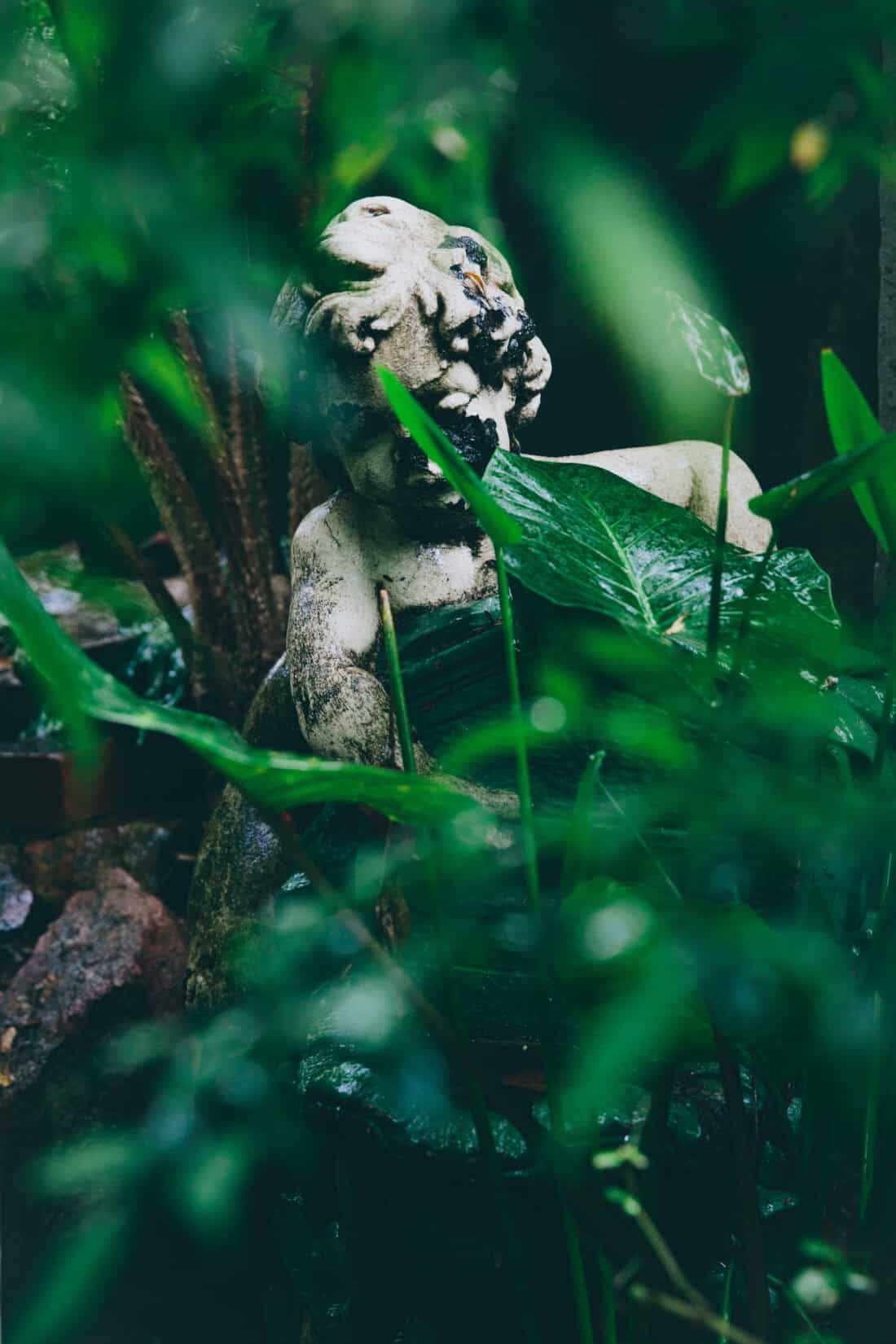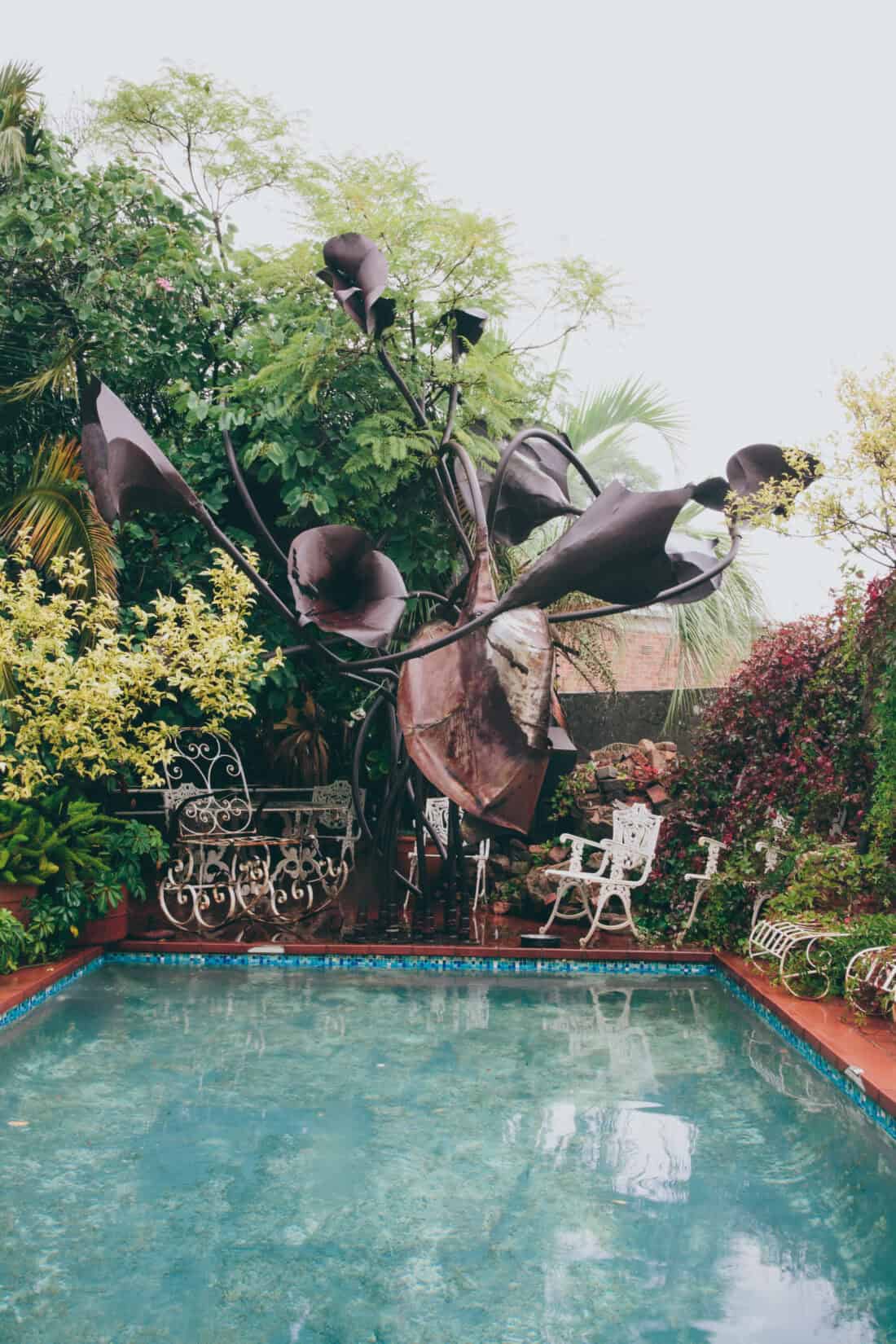Nothing makes me happier than seeing a true expression of someone in something that they create. Whether it’s art, clothes, architecture, or a garden, the realization of an individual vision is what makes being a designer fun. So even though you might look at this garden and not see the designer beauty, I assure you that it is there. It is the vision of what I call a Forest Temple.

Forest Temple is a garden style I named in my 2014 book – Cultivating Garden Style. This is how I described it:
Please, don’t assume that I expect you to have or want to plant a forest or build a temple. Rather, I propose you think of the forest temple as a design reference for those of us tree people, fairy lovers, and wood nymphs re-incarnated. It is for those who love to be under a canopy rather than out in the open and who find solace and peace in being surrounded by trees and greenery.
Forest temples are divine answers to vacant or over-grown urban lots, courtyards, greenhouse gardens, tiny green patches – wherever you can fit one – and, of course, gardens that naturally incorporate the woods. I’ve even experienced one once on the roof of a department store in Central London.
A forest temple just barely gives the sense of being cultivated and it often has haphazard planting. Don’t create a forest temple if you want cut flowers. This is a garden where, instead, you will be able to enjoy the fleeting beauty of an ephemeral or a single stem here and there. They can be created from scratch (as is the garden of Clive Rundle) or they can be managed to enhance something that already exists. Wherever it is, they are all-encompassing with warmth and patina borrowed from nature. Woodland plants, textural trees, green walls, dangling vines, mossy pots, the smell of earth, and the sound of barely trickling water create the mood and fill the senses in this garden.

Clive Rundle’s Neglected Victorian Garden
Clive Rundle is a fashion designer whose reputation for fantastic runway shows makes him the star of Johannesburg Fashion Week in South Africa. His garden, 15 years in the perfecting, is a cultivated and refined study in rambling neglect.


Layering Woodland Plants in a Forest Garden
For this planting style to work, it is important to think in layers.
First, have a leafy canopy in place. This provides the shade and the sense of protection and enclosure that defines this type of garden. If you don’t have full-grown trees, then maybe woody vines such as grapes or roses can be trained over a pergola to create the canopy.
It is also possible that the canopy is the overhang of an upper-level deck or balcony, the roof of a greenhouse, or, if small enough, the dappled shade provided by a container-planted tree.
Once the canopy is in place, add texture with hanging plants and medium-sized trees. Dwarf conifers and mid-sized shrubs like blueberries can fill out the lower middle layer.

Fill the floor of the garden with woodland plants, ferns, vines, and moss. Moonflowers, roses, epimedium, and vining plants will tie the layers together as they snake through and climb or ramble.
Trillium, astilbe, and a healthy selection of lower-ground plants (roots and tubers) that give seasonal ephemeral beauty provide little fleeting sparkles of color.
Remember that once the leaves are gone from the trees, the entire garden will be entirely different. Rather than walls of green, you will find you have architecturally interesting branches and stems and the option to grow plants that will enjoy the little bit of sun available before the leaves set on in the spring.
Try colchicums, bloodroot, and snowdrops to create interest in the earliest of spring.

How to Create the Forest Temple Planting Style:
Because the joy in this type of garden comes from the natural rambling it is ok to let it look a little haphazard. You will save yourself some backbreaking maintenance labor if you accept that this type of garden will have a strong will of it’s own and that at least a few weeds should be welcomed.
Remember that once the leaves are gone from the trees, the entire garden will be entirely different. Rather than walls of green you will find you have architecturally interesting branches and stems, and the option to grow very early season plants that will enjoy the little bit of sun that is available before the leaves set on in the spring.
Don’t try to keep plants separated. Encourage them to not only ramble, but get right up in each others business. Roses or other vines growing through nearby trees or shrubs, and over other features should be encouraged as it adds to the natural tapestry.

Think of this as an abandoned Victorian garden with a new owner who is attempting to introduce a Japanese aesthetic.
– Clive Rundle







Nothing is pruned (except roses), and what some would call messiness is purely by design. It is a haven of untouched splendor – just what the designer wanted.
Read more at Visi and in the Gallery.
More Inspiration for Woodland Gardens
All images provided by Clive Rundel
